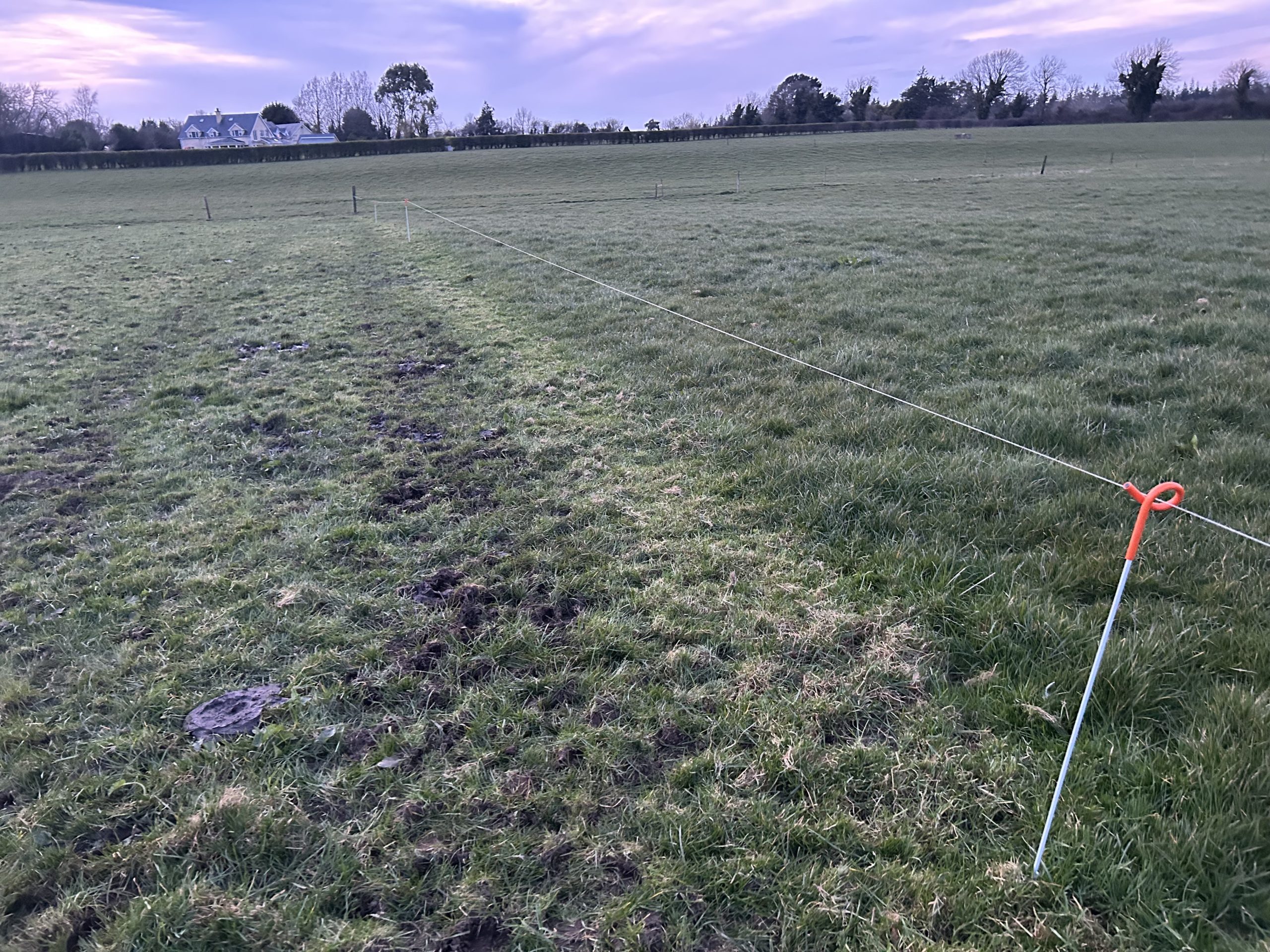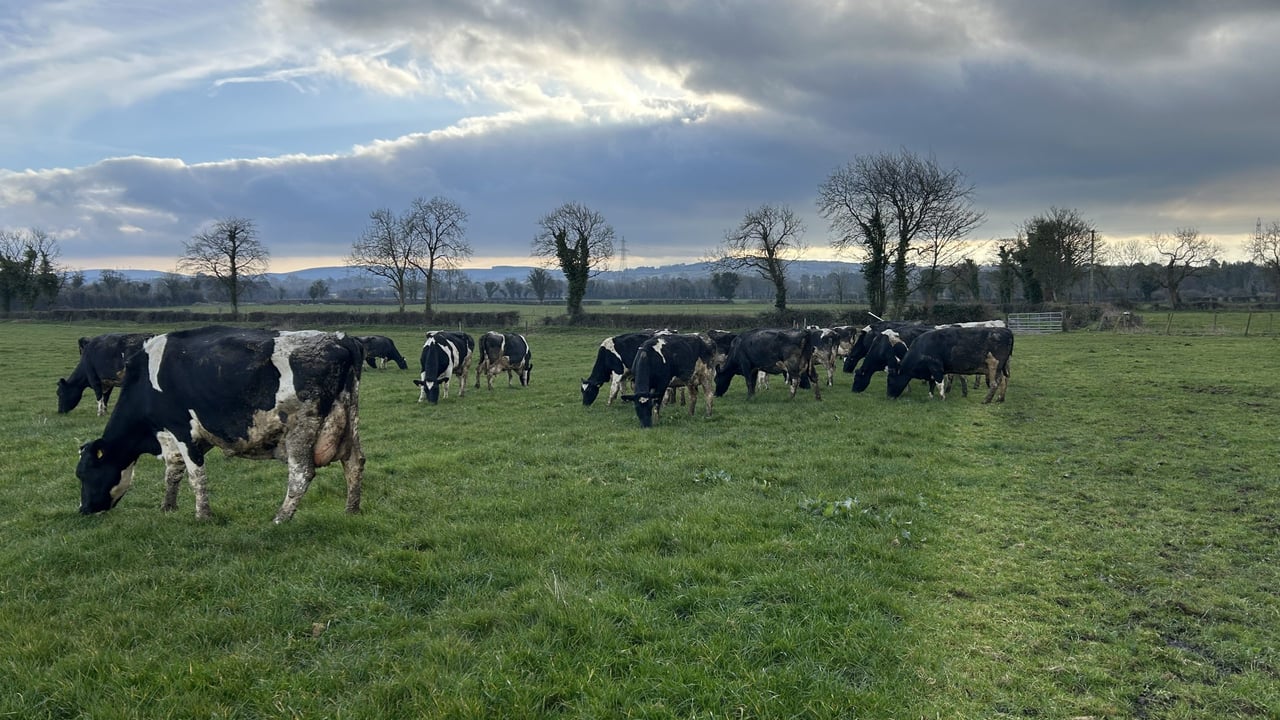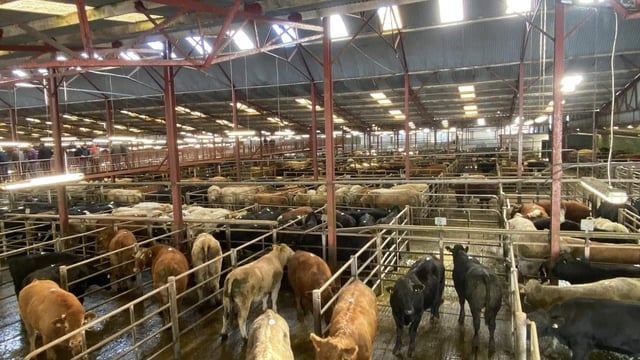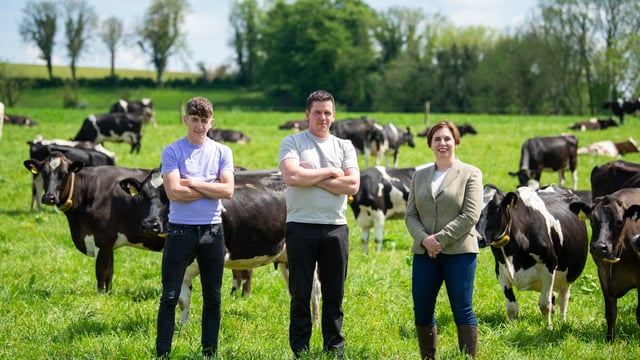Grazing: Meeting the herd's energy demand as breeding beckons
Negative energy balance (NEB) can become an issue for cows at this stage as many are now beginning to reach their peak milk production while still climbing towards their maximum dry matter intake (DMI).
Most cows are starting to hit their peak milk production, which usually occurs around six to eight weeks after calving.
At this stage, cows' DMI is still limited as they only reach their peak DMI around eight to 10 weeks after calving.
So, at this stage of the lactation, it is important to ensure the cow is not ‘milking off her back’ and losing condition to pump milk production.
This can also lead to prolonged NEB whereby the cow is using more energy for maintenance and milk than what she is receiving, which can lead her into a state of ketosis.
It is important to maximise the amount of grass in the cow's diet due its richness in energy, especially from spring grass, which can help the cow maintain condition and drive on solids.
Milk protein at this stage of lactation can take a hit and in severe cases fall below 3.2%, which is usually as a result of cows coming in and out from grazing due to poor conditions. Thankfully, this should not be the case at the moment in this good spell of March weather.
When cows go from high quality grazing grass with a UFL of about 1.0-1.1 kg/DM back into sheds getting fed 70% DMD silage, which only has a 0.8 UFL kg/DM, the energy density of the diet and digestibility of the forage is lower, which has an impact on milk protein.
This should not be the case at this stage, as ground conditions seem to be favourable with grass growth improving thanks to the milder, wet conditions last weekend.
If NEB is too severe then excess body condition score (BCS) loss will occu,r which will have serious implications on fertility, lameness and overall herd performance.
Farmers should set the target of not allowing the cows to lose more than 0.5 units of BCS in the first 10-12 weeks of lactation when their DMI is slowly increasing (about 0.8kg DM/week from a starting point of 13kg DM when first calved).
Breeding season is now only around the corner and farmers don't want cows under 2.75 BCS when getting mated, which can only be achieved by having no more than 1.0 UFL of an energy balance deficit, on average, in early lactation.
To prevent any BCS loss, getting grass into the diet, monitoring residuals, and ensuring grass deficits are met with high-energy ingredients is vital.
If the average farm cover (AFC) on the farm is above 900kg DM/ha, cows should be full-time at grass and if the AFC is below 750kg DM/ha, farmers should be allocating grass by day.
The message is clear, in order to prevent BCS loss, meet the herd's energy demand, drive solids production on and, to maximise profitability, the amount of grass in the cow's diet is key.

In early lactation, studies show that a 13-14kg of grass DM allowance complemented with 4kg of a high-energy dairy nut daily is sufficient to ensure a good energy balance.
However, farmers need to be careful because, while it is positive to get cows out grazing and achieving good residuals, these residuals need to be checked daily, aiming for a 3.5cm to 4cm residual in the first rotation.
There needs to be a fine balance between achieving good residuals and maximising the cow's DMI as you don't want to be achieving what you consider to be a good residual at the expense of under-feeding the cows and affecting their DMI.
Let the cows do the talking - if they seem to be going too tight, allocate a bit more grass. Likewise, if they seem to be leaving too much behind, pull the allocation back ever so slightly.
If grass availability is a limiting factor, high-quality silage should be added to the diet earlier in the season as it won't affect milk performance earlier in the lactation compared to when cows go beyond their peak.
If you are ahead of target from a grass availability point of view, concentrate feed levels should be pulled back to increase the grass intake.
Ahead of the breeding season, to ensure cows are at optimal condition for breeding, the amount of grass in the cow's diet is the key.





